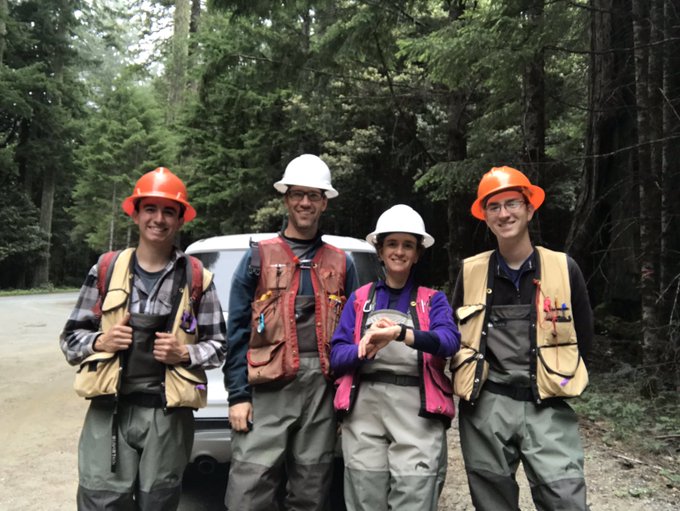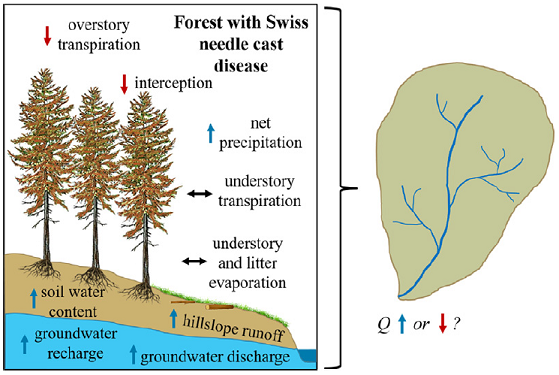Apres le succes de notre article original dans The Conversation, Francois-Nicolas Robinne (Global Water Futures), Dennis Hallema (NC State) et moi-meme avons traduit notre article en francais et publie notre commentaire dans The Conversation (France) pour aider a mieux faire connaitre les problemes lies aux effets des feux de foret sur l'eau.
Francois-Nicolas Robinne (Global Water Futures), Dennis Hallema (NC State), and I published a commentary in The Conversation to help raise broader awareness of the issues associated with wildfire effects on water.
"Short-term effects of recent fire on the production and translocation of pyrogenic carbon in Great Smoky Mountains National Park", led by superstar-post-doc Dr. Lauren Matosziuk, was published in Frontiers in Forests and Global Change. This was fun study, funded by NSF, investigating the production and movement of pyrogenic carbon following wildfire at a NEON site.
We are extremely excited to have our study on the "Long-term hydrologic recovery after wildfire and post-fire forest management in the interior Pacific Northwest" published in Hydrological Processes. My collaborators (Ryan Niemeyer and Richard Woodsmith) and I feel extremely fortunate to have had the opportunity to complete this unique study, investigating >40 years of post-fire data from the Entiat Experimental Forest.
Our study, in collaboration with Ryan Niemeyer and Richard Woodsmith, on the long-term effects (>40 yrs) of wildfire and post-fire forest management on streamflow in the Entiat Experimental Forest (north-central Washington) was the focus for a story in Science Daily.
The FEWS Lab is extremely excited to have launched a new four year study to investigate the effectiveness of riparian zones in northern California. This research is in collaboration with Dr. Catalina Segura, is funded by CAL FIRE, and is occurring in partnership with Green Diamond Resource Company. In summer 2019 we started our pre-harvest data collection by instrumenting 18 watersheds to measure longitudinal stream temperature (288 sensors), air temperature, radiation, dissolved oxygen, primary productivity, streamflow, and meteorology. We will address important questions about controls on water quality and stream metabolism.
Swiss needle cast disease is a huge problem in Pacific Northwest forests, with a 5-fold increase in area impacted over the last ~20 years. Our interdisciplinary collaboration between hydrologists, geomorphologists, forest pathologists, and forest biologists quantified the effects of this disease epidemic on water supply in Oregon Coast Range catchments. In short, more SNC = more water in streams.

